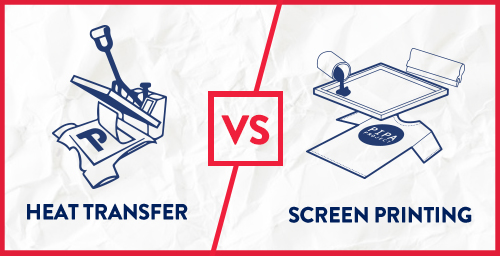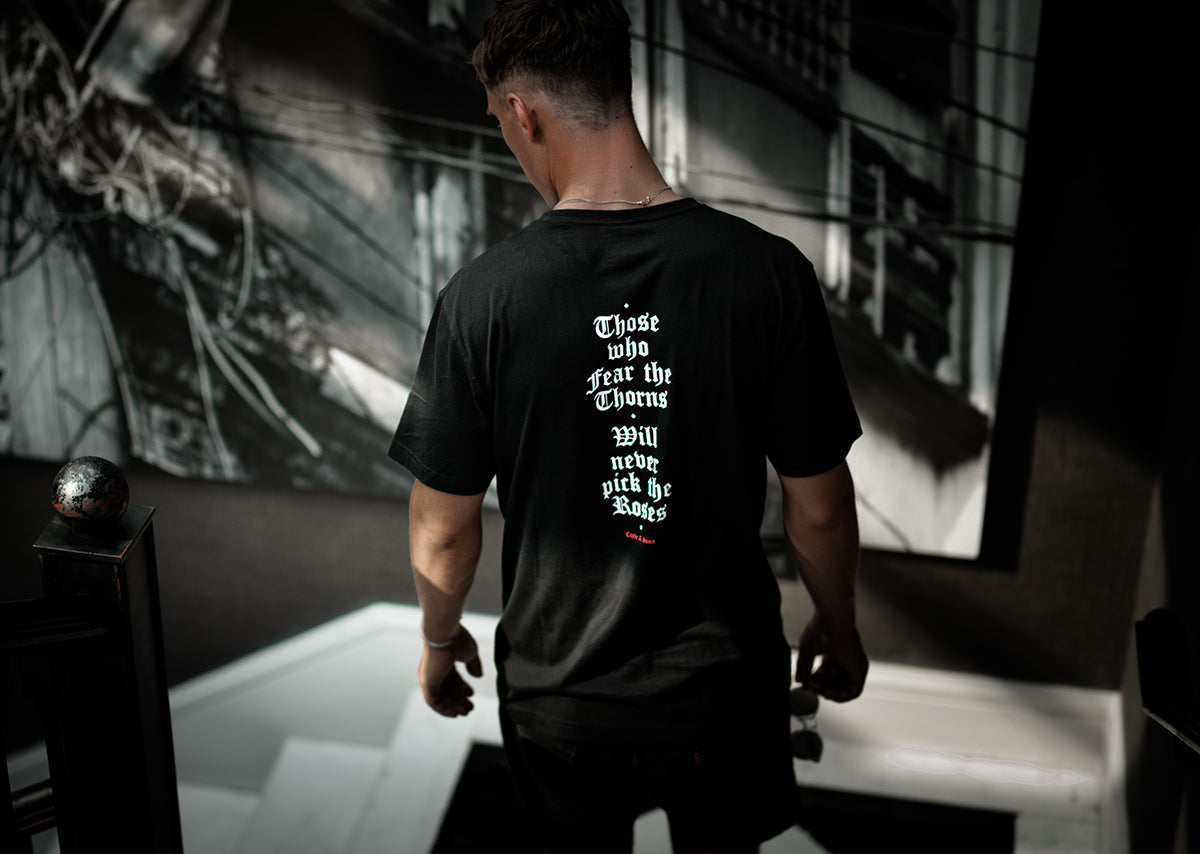Things about Tx Tees
Things about Tx Tees
Blog Article
The Tx Tees PDFs
Table of ContentsSome Of Tx TeesTx Tees Can Be Fun For EveryoneWhat Does Tx Tees Mean?Tx Tees - TruthsSome Ideas on Tx Tees You Need To KnowThe 9-Minute Rule for Tx TeesTx Tees for Dummies
That brings your total amount to approximately $1,900 gross and shipping. Build up various other costs, like the number of energies it takes to run the shop and the cost of ink and solution per layout. screen printing shop. Take the print listed below for instance. This is a one-color image, so the expense of ink per tee shirt is around 20 cents.The emulsion needs to only be a couple of cents since you 'd just need to coat one screen for this job. Normally, printers attempt to make up to 45% revenue on a print job.

With DTF, you can publish a handful of t-shirts, or just one. Use the same calculator as the section above to compute just how much earnings you 'd use DTF transfers. Contrast the costs and revenues to whichever technique speaks finest to your arrangement and process. Both display printing and DTF have their specific niches on the planet.
Not known Facts About Tx Tees
The best method to recognize? Ask around and see what print stores like your own are doing. embroidery shop. Try both out and see which you like better
When you're selecting what type of printing technique to utilize for printing your artwork layouts on your garments, it's essential that you understand the differences in between these 2 techniques so you can optimize outcomes while lessening prices. Display printing is one of the most frequently used strategy for publishing designs on textiles.
DTG printing is also referred to as spot or straight to garment printing due to the fact that it prints only what is required rather of making a display as display printers do. https://tx-tees.webflow.io/. Display printing works by display filler squeegee screen printing ink screen mesh screen, after that transferring the picture to garment making use of warmth and/or stress
The DTG printer uses unique dye-sublimation inks that are applied into a pre-designed image by an electronic printing system. The inks enter into the fabric, enabling for vibrant colors and extraordinary information. It's also called spot or straight to garment printing due to the fact that it publishes just what is needed instead of making a screen as display printers do.
Fascination About Tx Tees
Initially, it's much quicker - you can publish a fullcolor image in mins, in contrast to hours for screen printing. Second, there's no set up time or expenses included - you can publish any kind of design you such as, without having to produce a display. Third, there's no waste - because screen printers screen print one design at once, they have to screen each shade individually.
The paper is very costly and can only be utilized once. Once it's printed on, it needs to be disposed of. - The initial purchase price is less than the upfront investment of DTG printers- You can publish a fantastic read multi-color styles one screen at once rather than having to publish each color separately like DTG printing.

Our Tx Tees Statements
Nonetheless, rather than utilizing screen mesh as display printers do, dye sublimation printers use laser innovation to move your pictures onto garments or paper. A warmth procedure moves the dye from its solid-state directly into the gas phase which consequently merges it onto material substrates when they are rapidly heated to high temperature levels under high pressure.
Sublimation printing is green. It uses less water than screenprinting, and because it doesn't involve the use of hazardous solvents, it's risk-free for all sorts of apparel. The color sublimation inks are likewise unsmelling when cured, unlike display printers that make use of harmful chemicals throughout the screen printing process that leave an unpleasant odor.
They also save money on costly equipment like direct exposure devices given that dye sublimation printers don't require a UV direct exposure system or a flash remedy stove that is commonly used in screen printing (custom screen printing). What is straight to garment printing (DTG Printing)? DTG printing is an electronic screenprinting procedure that publishes straight onto material making use of specialized inkjet printers
The 9-Minute Rule for Tx Tees
DTG printing supplies lots of advantages over typical screenprinting, including the ability to publish photographic quality photos, greater color vibrancy, and the capacity to print designs on darker materials. DTG printers function by warming the textile ink up until it develops into a gas. The gas after that penetrates the fabric, bonding with the fibers to produce a long-term print.

Display printers merely prepare their display then begin publishing up until they run out of product or ink.- There is a broad variety of skilled screen printers throughout the world, which can be valuable for beginners. - It's a slower procedure - screen printers frequently need to wait on the ink to completely dry before they can print the following color- Display printers require hands-on labor, so there's a greater knowing curve and it takes longer to create a premium design- Display printing isn't as accurate as DTG printing, so you might obtain some "blood loss" of colors from one part of the picture onto an additional otherwise done properly.
5 Easy Facts About Tx Tees Shown
Instead of making use of display mesh as display printers do, dye sublimation printers make use of laser innovation to transfer your images onto garments or paper. A warm process transfers the color from its solid-state directly right into the gas phase which subsequently merges it onto material substrates when they are quickly heated to heats under high pressure.
Sublimation printing is green. It uses less water than screenprinting, and because it doesn't entail using damaging solvents, it's risk-free for all sorts of garments. The dye sublimation inks are additionally odorless when healed, unlike display printers that use harmful chemicals throughout the screen printing process that leave behind an undesirable smell.
They also conserve cash on expensive equipment like direct exposure systems because dye sublimation printers do not need a UV direct exposure unit or a flash remedy oven that is typically utilized in display printing. What is direct to garment printing (DTG Printing)? DTG printing is a digital screenprinting procedure that prints directly onto fabric utilizing specialized inkjet printers.
Rumored Buzz on Tx Tees
DTG printing provides numerous advantages over conventional screenprinting, consisting of the capacity to publish photo top quality images, greater shade vibrancy, and the ability to print styles on darker materials. DTG printers work by warming the textile ink till it develops into a gas. The gas then permeates the material, bonding with the fibers to produce a permanent print.
Report this page